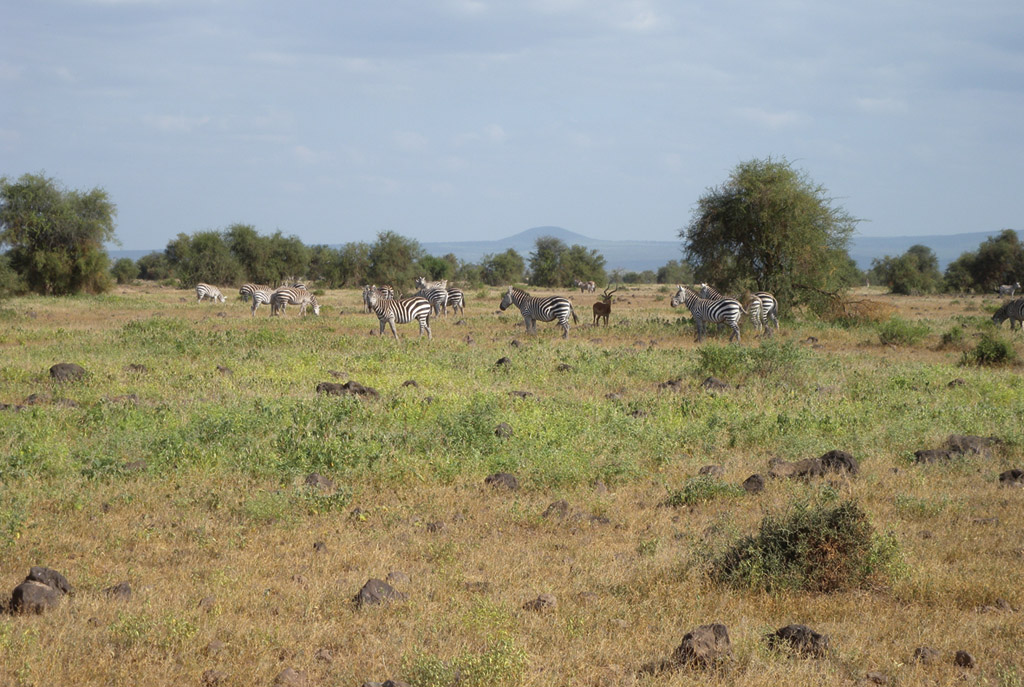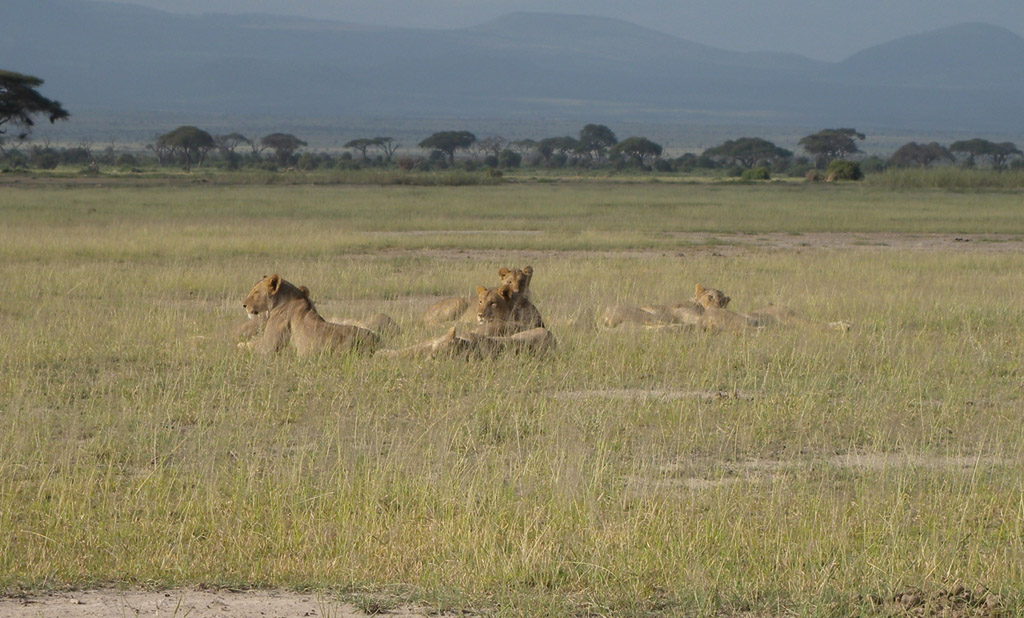2.4 Savanna biomes
The savanna biome is completely different from the rainforest biome. The rainforest biome is dominated by its plant life. The savanna biome is dominated by its animal life. The plant life is important, but it is the animal life of this biome that attracts the most attention. The world’s savanna areas are shown in Source 2.9.
The plant life associated with this biome will be examined first, followed by the factors that affect that plant life, and then the animals which inhabit this exciting biome.
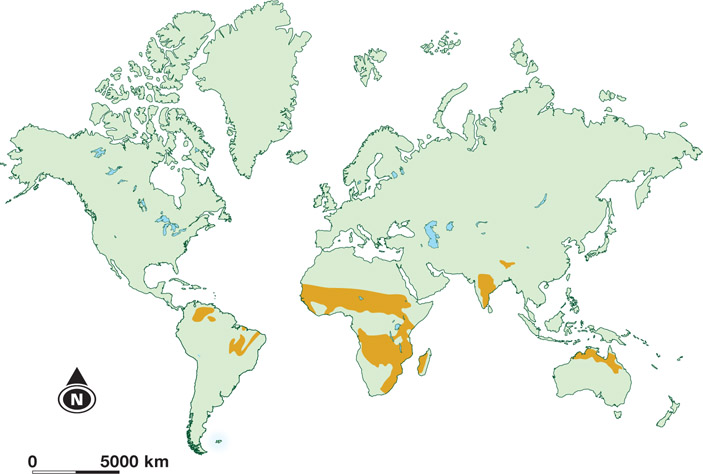
Vegetation
The images below show typical savanna landscapes.
The criteria used for examining vegetation in the rainforest biome will also be used here.
Height
The trees do not grow very high. There is often a sparse shrub layer, and the ground cover is primarily grass.
Density
The density of the tree and shrub layers is very low but the density of the grass layer can be quite high.
Coverage
The trees and shrubs cover very little of the ground. The primary ground cover is grass.
Plant species
There are more species in the ground layer than in the tree and shrub layers.
Special adaptations
There are many special adaptations that plants have developed to survive in this environment.
These include:
- The canopy has a spreading shape, to shade the root layer.
- Many plants have developed thorns and prickles to prevent animals eating the vegetation.
- Some plants have developed tissues that retain a supply of water they can use during the dry season.
These are not the only adaptations associated with this landscape, but they are the ones that help make it a distinctive biome.
Special relationships between plants
There does not appear to be any special relationship between the plants in the savanna as there are in the rainforest.
Factors that affect the savanna vegetation pattern
The key factor that governs most biomes is climate. The characteristic of the climate that has created the savanna vegetation pattern is simply its seasonal change.
In savanna areas, the climate changes from hot and wet to hot and dry. The hot and wet season brings an explosion of plant growth to the savanna, especially in the grasses. This vegetation change has a major impact on the animal life of this biome.
Source 2.12 Temperature and rainfall graphs from savanna areas around the world
Animal life
When the rains come, the savanna vegetation springs to life. The most rapid response is from the grasses, which have died back during the dry period just as they do in your backyard. The rains bring a rapid spurt of growth. This growth attracts a group of animals known as grazers or herbivores.
The herbivores eat the grass. They migrate into an area where the rains have caused the grass to grow and retreat as the area dries up. They breed, and their numbers multiply. While most herbivores graze on the grasses, some, such as the giraffe and the elephant, graze on other new vegetation too. The giraffe’s long neck allows it to reach new shoots and its thick rubbery lips allow it to avoid thorns and prickles. The elephant simply knocks the tree down to get at the leaves it wants.
The herbivores bring with them another group of animals: the carnivores. These animals eat meat. They prey on the herbivores – they eat the weak, the young and those not paying attention to their surrounds. Some, such as the crocodiles, congregate at river crossings and attack the herbivores as they cross.
Decomposers make up the final major group of animals on the savanna. They obtain their nutrients by eating the rotting flesh left behind by carnivores and devouring the bones of dead animals. These animals, like many other animals on the savanna, produce droppings which dung beetles – probably as far removed from the top of the food chain as it is possible to be – use to do their work: they convert the droppings into nutrients, which return to the soil and are used by the plants for their growth. Thus the ‘circle of life’ is completed on the savanna.
Source 2.13 is a simple food chain for the African savanna.
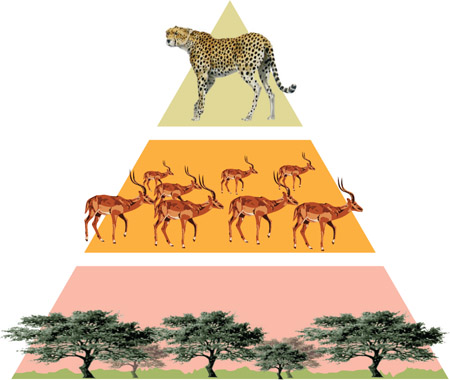
DEVELOPING YOUR UNDERSTANDING 2.3
Grasslands cover almost one-fifth of the land on Earth. They can be found on every continent except Antarctica.
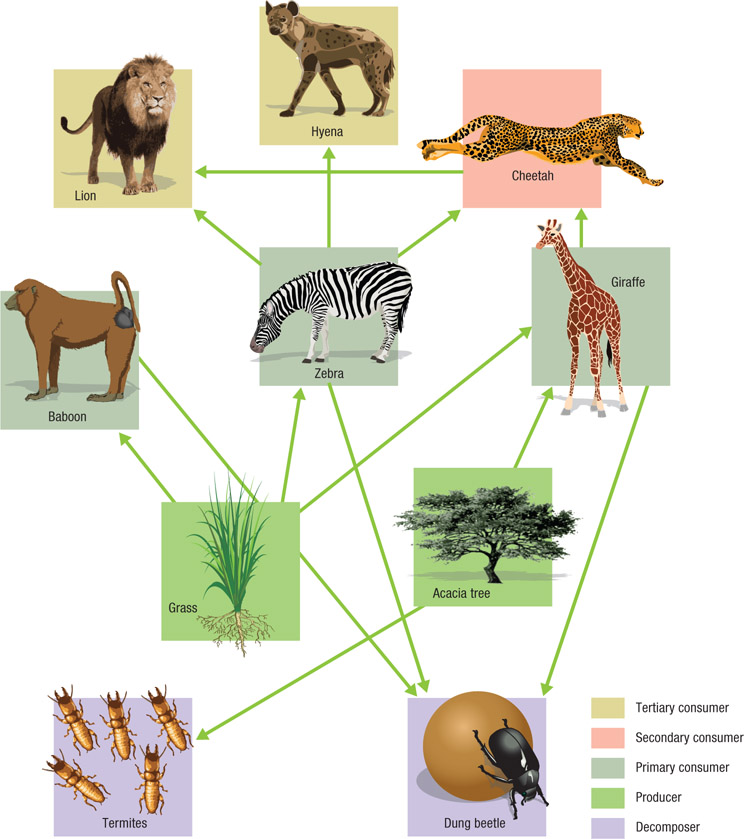
Interactive 2.2
DEVELOPING YOUR UNDERSTANDING 2.4
- Australia has savanna areas. Explain why the Source 2.13 diagram doesn’t work for the Australian savanna areas.
- Source 2.14 is a more complicated interpretation of the same food chain, but still does not show the full extent of the relationships between the plant and animal communities of the savanna. For example, where do the hippopotamus, the warthog, the wildebeest, the oxpecker and the gnu fit?
Although it has been impossible to cover all aspects of the savanna biome in this chapter, it has been established that:
- the vegetation community is distinctive
- the vegetation community responds to variations in climate, especially rainfall
- the animal life responds to the variations in the vegetation communities
- there are very complex relationships between the various animal communities.


